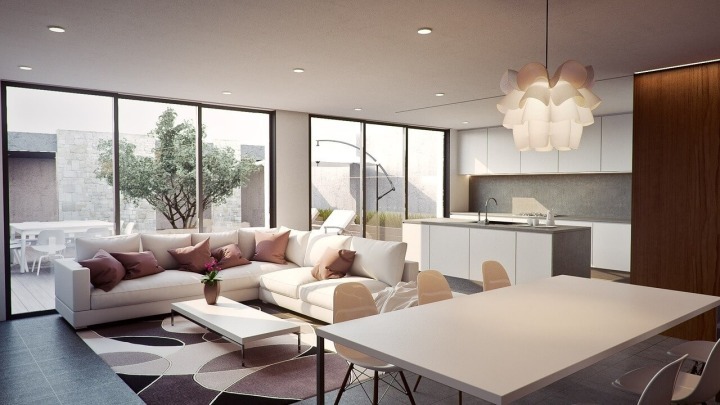Introduction
Prefabricated homes, also known as prefab homes or modular homes, are factory-built houses that are transported to the building site and assembled on-site. The concept of prefabricated housing originated in the early 20th century as a way to efficiently mass produce affordable homes.
Prefab homes consist of modular components or sections that are manufactured offsite under controlled factory conditions. The prefabricated modules or panels are then transported to the building site and assembled by crane or other equipment. Prefabricated homes differ from manufactured homes or mobile homes in that they are not built on a metal chassis like a trailer.
Prefab homes have grown in popularity in recent years due to their many benefits compared to traditional stick-built homes:
- Cost savings - Building in a factory can reduce construction costs by 20% or more. Materials are bought in bulk by the manufacturer. Labor is more efficient in a factory setting. Weather delays are eliminated.
- Customization - Homeowners can often fully customize their prefab home's design, floorplan, features, finishes, and materials.
- Quality - Prefab homes are built to meet the same local codes and standards as site-built homes. Materials and workmanship can be superior since everything is completed in a controlled factory setting.
- Speed - Construction timelines are reduced since site work and home assembly happen concurrently. Some prefab homes can be move-in ready in a matter of weeks or months versus nearly a year for site-built homes.
- Sustainability - Prefab manufacturing generates less material waste. Energy efficiency can be easier to engineer into a prefab home's design.
While still a small segment of the housing market, prefabricated homes are gaining momentum as an innovative, high-quality homebuilding option that offers potential savings in cost and construction time.
Cost Savings
One of the biggest advantages of prefabricated homes is the potential for significant cost savings, both upfront and over the long term compared to traditional construction. Prefab homes are built in a factory using assembly line techniques, which can be much more efficient than standard on-site construction. This allows prefab home builders to buy materials in bulk at wholesale prices and take advantage of economies of scale.
The modular construction process also minimizes material waste, and the controlled factory conditions reduce weather-related delays that can drive up costs with traditional building. Since prefabricated sections are constructed indoors, the work can continue even in bad weather.
In addition, prefab homes don’t require the same level of skilled labor on-site that a traditional build does. The ability to have factory workers specialize in specific aspects of construction versus general contractors also improves efficiency.
Altogether, these factors allow prefab home companies to offer new homes at around half the per-square-foot cost of comparable site-built houses. This cost advantage holds true for both single family detached homes as well as prefab ADUs, tiny homes, and other small dwelling options.
Over the longer term, owners can also benefit from reduced maintenance and energy costs. The construction techniques used for prefabricated homes make them exceptionally air-tight and energy efficient. Their quality control also lends itself to needing fewer repairs or replacements versus traditionally built homes. Between lower utility bills and less upkeep, prefab home owners will save thousands of dollars over the lifespan of their home.
Customization
One of the biggest advantages of prefabricated homes is the ability to customize and personalize your home. While prefab homes were once very cookie-cutter, today's prefabricated homes allow for an incredible amount of customization when it comes to floorplans, features, finishes, and more.
When working with a prefab home company, you'll be able to sit down with designers to create a floorplan that perfectly suits your lifestyle and needs. Most companies have an array of standard floorplans to choose from, which you can then customize by moving walls, adding or removing rooms, changing window placements, and more. Nearly any layout or floorplan imaginable can be created.
Beyond the floorplan, you'll also get to pick all of your interior and exterior finishes. Choose your cabinetry, countertops, flooring, lighting, appliances, paint colors, siding, roofing, and other details to reflect your personal style. Upgrade to higher-end finishes and fixtures if desired. Some prefab companies even allow you to ship in your own unique materials if you want to integrate specialty items into the home.
In addition to aesthetics, you can also customize structural and functional elements like insulation, window types, roof pitch, and more. Add a garage, porch, basement, or any other additions that suit your preferences. Integrate smart home technology and automation features. The possibilities are nearly endless when it comes to personalizing a prefabricated home.
Having the flexibility to make a prefab home your own through customization gives you the best of both worlds. You get the affordability and efficiency of prefabrication along with the ability to create a unique living space tailored to your lifestyle and needs. This makes prefab homes appeal to a wide range of buyers compared to the prefabricated homes of the past.
